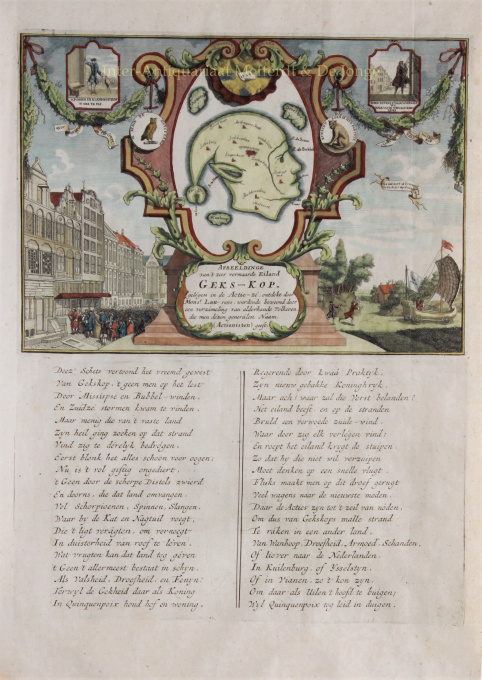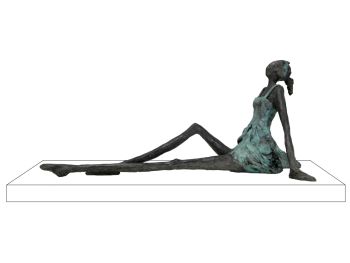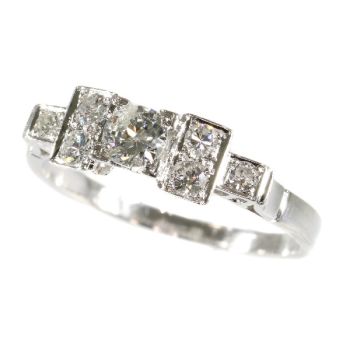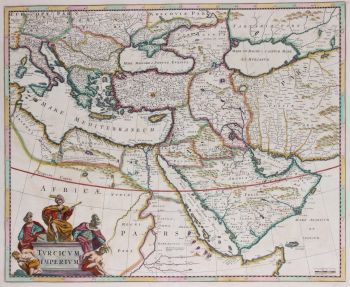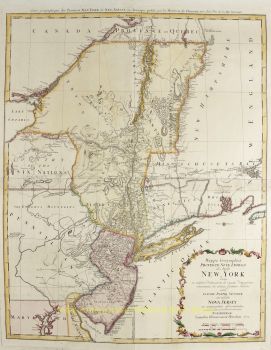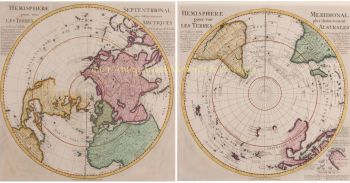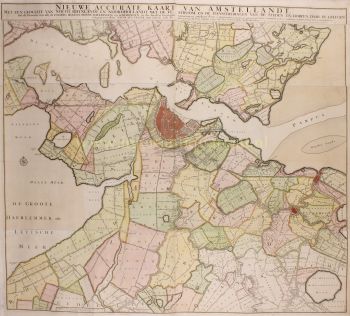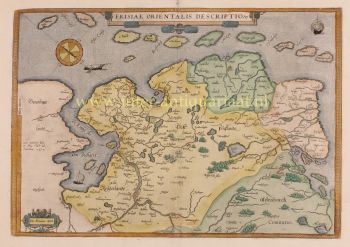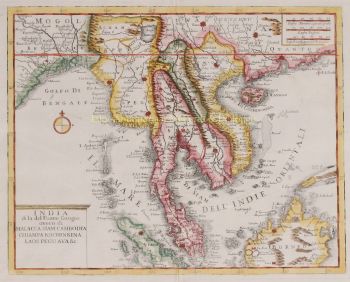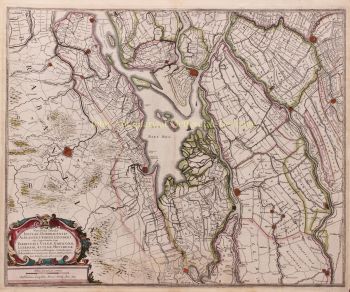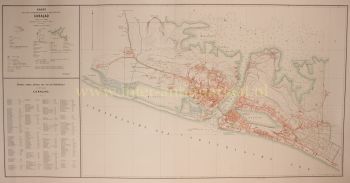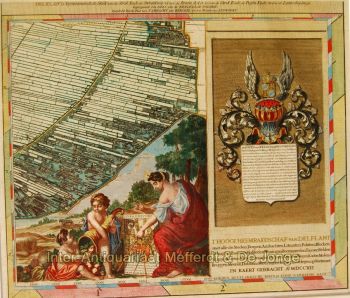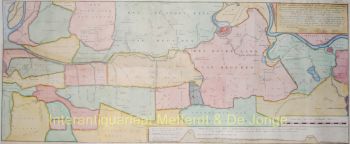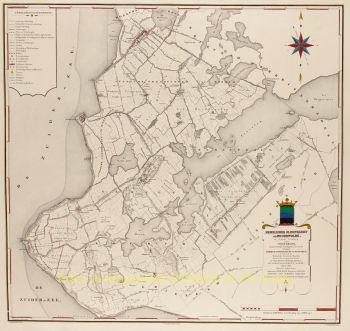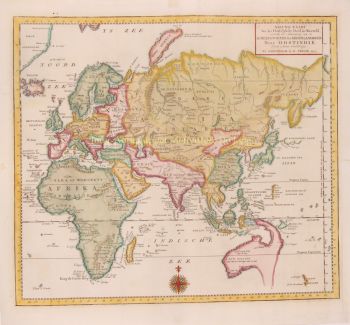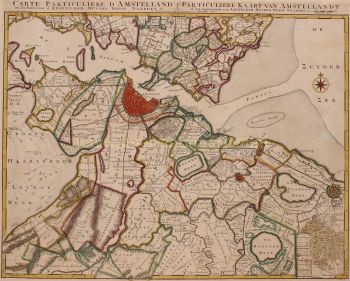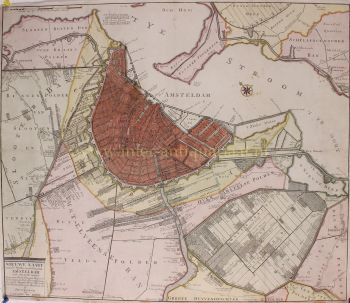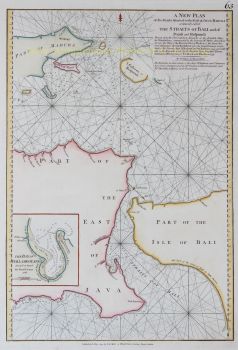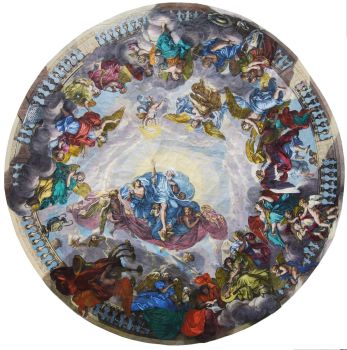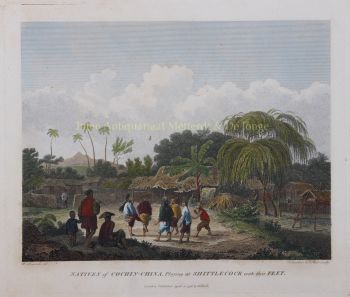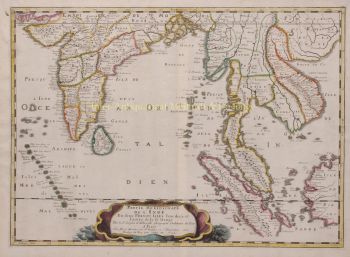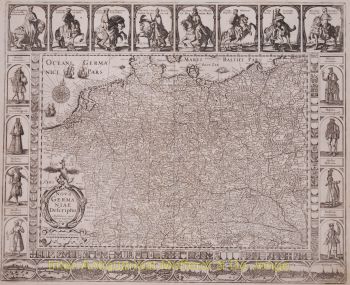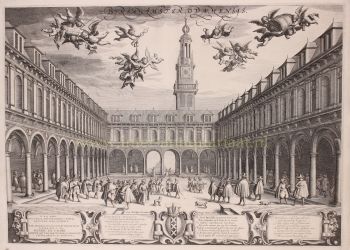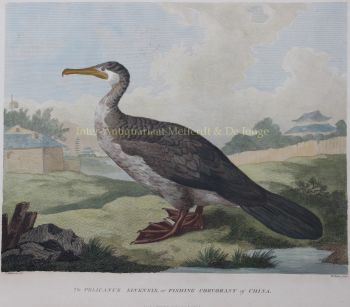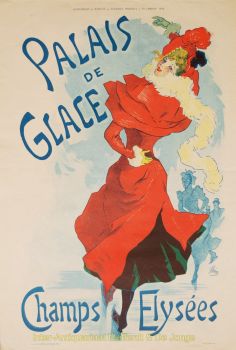Mississippi Bubble, la isla de los locos 1720
Artista Desconocido
€ 1.250
Inter-Antiquariaat Mefferdt & De Jonge
- Sobre la obra de arte“Afbeeldinge van't zeer vermearde Eiland Geks-Kop…”, [Representation of the very famous island of Mad-head, lying in the sea of shares, discovered by Mr. Lawrens, and inhabited by a collection of all kinds of people, to whom are given the general name shareholders.] Copper engraving anonymously engraved and printed in or after 1720 in Amsterdam for Het Groote Tafereel der Dwaasheid… The print satirizes the folly and consequence of the bubble economy created by the Mississippi Scheme and its careless investors. Size 29 x 23 cm. This satirical engraving of the Mississippi Bubble is one of the most famous cartographic curiosities. It represents the collapse of the French Compagnie de la Louisiane d'Occident, founded by the Scottish financier John Law in 1717, which was granted control of Louisiana. Its plans to exploit the resources of the region (the “Mississippi Scheme”) captured the popular imagination and people rushed to invest: share prices opened at 500 livres, but rapidly rose to 18,000 livres. At this point speculators indulged in profit-taking, causing a run on the shares. Confidence collapsed, causing a run on the company’s capital and the company went bankrupt, ruining many, not only in France, but throughout Europe. As a consequence of this failure, confidence in many colonial schemes collapsed, forcing many companies into bankruptcy, including the English South Sea Company and a number in the Netherlands, prompting this satire. The center of the map is an island that takes the form of a traditional fool’s head. It is situated in the “Sea of Shares”, surrounded by the smaller islands of Armoed [Poverty], Droefhyt [Sorrow], and Wanhoop [Despair]. Rivers are used to define the face, the cap, and the donkey ears, and are marked with humorous place names including Bedriegers Stadt [Charlatan City], Leugenburg [Lie Town], Blind Voort [Blind Fort], Sottenburg [Crazy Town], and Bederfwyk [Corrupt Quarter], among others. At the center is the city of Quinqumpoix, named after the street in Paris where John Law maintained his offices. The rivers Seine, Teems [Thames], and Maas [Meuse], are major arteries in those countries most affected by the collapse: France, England, and The Netherlands, respectively. A vignette to the left of the map illustrates angry investors storming the Quincampoix coffee house where stock exchange traders met in Amsterdam. In another to the right, John Law himself flees from angry investors in the direction of Vianen on board a square-rigged land-yacht, itself another absurdity of the period. The map shares the sheet with a second plate, situated below it, that continues to satirize the Mississippi Scheme in verse. Price: EUR 1.250,-
- Sobre el artista
Puede suceder que un artista o creador sea desconocido.
Algunas obras no deben determinarse por quién está hecho o por (un grupo de) artesanos. Algunos ejemplos son estatuas de la Antigüedad, muebles, espejos o firmas que no son claras o legibles, pero también algunas obras no están firmadas en absoluto.
También puedes encontrar la siguiente descripción:
•"Atribuido a …." En su opinión, probablemente una obra del artista, al menos en parte.
•“Estudio de….” o “Taller de” En su opinión, una obra ejecutada en el estudio o taller del artista, posiblemente bajo su supervisión
•“Círculo de…” En su opinión, una obra del período del artista que muestra su influencia, estrechamente asociado con el artista pero no necesariamente su alumno.
•"Estilo de …." o “Seguidor de…”. En su opinión, una obra ejecutada al estilo del artista pero no necesariamente por un alumno; puede ser contemporáneo o casi contemporáneo
•"Manera de …." En su opinión una obra al estilo del artista pero de fecha posterior
•"Después …." En su opinión, una copia (de cualquier fecha) de una obra del artista
•“Firmado…”, “Fechado…” o “Inscrito” En su opinión, la obra ha sido firmada/fechada/inscrita por el artista. La adición de un signo de interrogación indica un elemento de duda.
•“Con firma…”, “Con fecha…”, “Con inscripción…” o “Lleva firma/fecha/inscripción” en su opinión la firma/fecha/inscripción ha sido añadida por alguien que no es el artista
¿Está interesado en comprar esta obra de arte?
Artwork details
Related artworks
- 1 - 4 / 12
- 1 - 4 / 24
- 1 - 4 / 12

